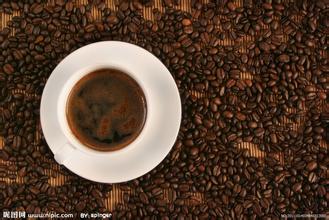Introduction of Variety characteristics of Flavor description and Grinding Calibration treatment of Vietnamese Coffee beans
Drinking coffee is a daily habit of Vietnamese people. Vietnamese cafes are very common and not expensive places. Ordinary coffee is only a few yuan RMB. Vietnamese coffee is not brewed in a coffee pot, but a special drip coffee cup, followed by an old-style printed glass, drop by drop to pass the time. When making, put the coffee powder into the drip cup on the bottom of the glass cup holder, press a metal sheet with holes, and then brew with hot water, so that the coffee drips into the cup. When making hot coffee, keep the cup warm in a large bowl filled with boiling water, because it may take ten minutes to finish a cup of coffee and the hot coffee will cool down. Some people like to add a layer of very sweet condensed milk at the bottom of the cup. When the coffee drips into the cup, they mix black coffee and white condensed milk to drink, which is extremely sweet. Ice can also be added.
This kind of coffee practice seems to only exist in Vietnam. I'm afraid only gentle Vietnamese have such a good temper to wait patiently for a cup of coffee to drip out and then drink it slowly. Even in the street coffee pick, but also the same production process, and unambiguous.
There are so many cafes in Vietnam that people have the impulse to open one immediately. If you don't lie, there are five or six in a small street. The cafes in each city are very different and have their own temperament.
The Association of Coffee Producing Countries (ACPC) supports a number of Central American coffee producing countries in their efforts to phase out low-quality coffee from the world coffee market in order to stabilize the market supply and demand balance.
EU countries applied OCHRATOXYN A contamination targets from 1 January 2003 and mass destruction of substandard coffee.
The above requirements require Vietnam coffee to have a big improvement in the processing field in order to continue to adapt and develop.
At present, Vietnamese coffee is still dominated by dry-processed ROBUSTA, which is purchased and dried by solar energy. If the harvest season encounters continuous rainy weather, burn coal or firewood to dry. There are also some companies that use mixers for wet processing. ARABICA, which has a smaller yield, is processed entirely wet. Many places use SORTEX color sorters to improve processing equipment in grades, adopt Vietnam national product quality standards in line with international standards, and improve product quality according to market requirements. Now, the more processing ARABICA coffee ability is poor, especially the first step of peeling. Because many areas lack the required amount of clean water and sewage treatment facilities, it is inevitable to pollute the environment.
Produce and supply to the market a variety of commodities other than green coffee kernels to meet consumer demand. At present, there are two manufacturers of instant coffee, one is VINACAFE's side and coffee factory, the other is Nestle (Thailand) in Vietnam factory, the current problem is to expand the market scope. In addition, the development of boxed liquid coffee is also being considered

Important Notice :
前街咖啡 FrontStreet Coffee has moved to new addredd:
FrontStreet Coffee Address: 315,Donghua East Road,GuangZhou
Tel:020 38364473
- Prev

Introduction to the Flavor description of Panamanian Coffee Bean
Panama has been among the world's best coffee producers since three years ago, surprising countries that have been in the vanguard of developer production for many years. Panamanian coffee is mainly produced in the west near the Costa Rican border, producing the best washed coffee. Compared with coffee beans grown at low and middle elevations, the low temperature and stable climate in the high elevations of Panama
- Next

Description of bitter and sweet flavor of Jamaican coffee beans introduction to the method of regional treatment of varieties produced by grinding scale
The earliest coffee on the island of Jamaica came from Haiti in Latin America in 1728. By 1790, some coffee farmers among the refugees in exile from Haiti had settled in the Blue Mountains and brought coffee-growing technology here. In 1838, Jamaica abolished slavery and allowed liberated slaves to cultivate their own land. Free slaves moved to the mountains to specialize in planting.
Related
- Detailed explanation of Jadeite planting Land in Panamanian Jadeite Manor introduction to the grading system of Jadeite competitive bidding, Red bid, Green bid and Rose Summer
- Story of Coffee planting in Brenka region of Costa Rica Stonehenge Manor anaerobic heavy honey treatment of flavor mouth
- What's on the barrel of Blue Mountain Coffee beans?
- Can American coffee also pull flowers? How to use hot American style to pull out a good-looking pattern?
- Can you make a cold extract with coffee beans? What is the right proportion for cold-extracted coffee formula?
- Indonesian PWN Gold Mandrine Coffee Origin Features Flavor How to Chong? Mandolin coffee is American.
- A brief introduction to the flavor characteristics of Brazilian yellow bourbon coffee beans
- What is the effect of different water quality on the flavor of cold-extracted coffee? What kind of water is best for brewing coffee?
- Why do you think of Rose Summer whenever you mention Panamanian coffee?
- Introduction to the characteristics of authentic blue mountain coffee bean producing areas? What is the CIB Coffee Authority in Jamaica?

